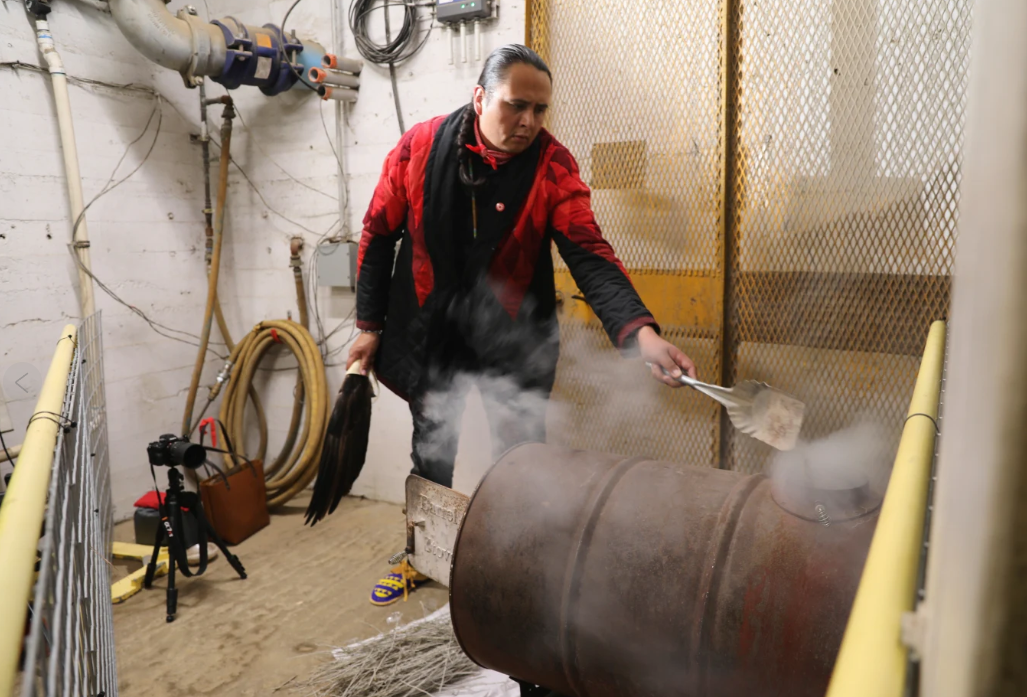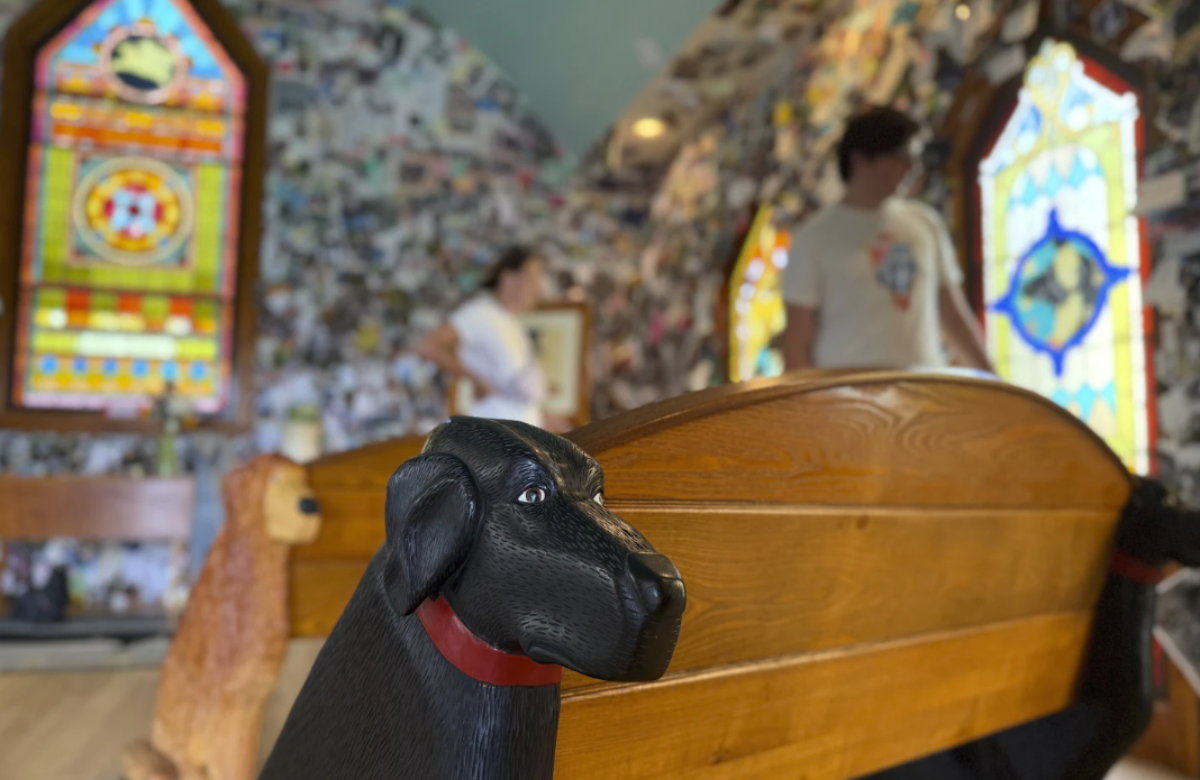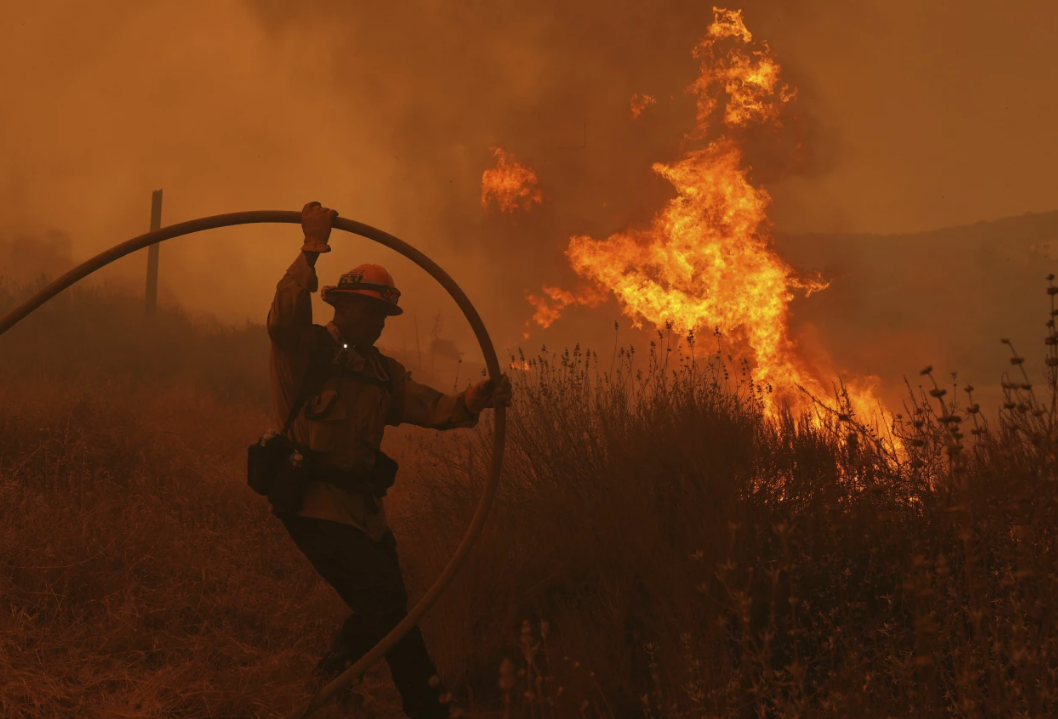When Lakota artist Marty Two Bulls Jr. gazes at the Black Hills of South Dakota, he sees more than just its natural beauty. To him, it’s a profound scar etched into the heart of the universe. This mountain range holds deep spiritual significance for several tribal nations, including his own, and symbolizes the ongoing fight for Indigenous land rights and the protection of sacred sites. For the Lakota people, Mount Rushmore is one of the most visible scars, along with the gold mine that once operated beneath it—an inspiration for Two Bulls to use his performance art as a form of spiritual cleansing.
“Land back” carries different meanings for different communities, reflecting the Indigenous-led movement to reclaim tribal self-determination through the restoration and stewardship of ancestral lands. Two Bulls aims to shift conversations about land rights and treaties to reflect this deeper connection.
The Black Hills, known as “He Sapa” or “black ridge” by the Lakota, Dakota, and Nakota peoples, are believed to be the birthplace of creation. The dark outline created by green pines against the blue sky gives the mountains their name. However, generations of mining for gold have left lasting scars. Today, the former Homestake Gold Mine, with its vast underground tunnel system, is home to the Sanford Underground Research Facility (SURF), where scientists study particle physics and dark matter. Despite its scientific importance, Two Bulls felt a deep sense of loss when he visited the mine during his artist residency at SURF.
“Witnessing the desecration caused by Homestake was heartbreaking,” he reflected. “It made me wonder, how do you recover from a desecration or a crime?”
Acknowledging the value of the scientific research conducted within the Black Hills, Two Bulls sought a way to honor the land’s spiritual significance. His answer was simple yet powerful: smudging. This traditional practice, involving the burning of sacred plants like sage, cedar, or sweetgrass, is used to cleanse spaces and individuals spiritually and physically.
Using sage donated by Native communities from the Pine Ridge Reservation to the West Coast, Two Bulls burned several bundles, each representing the prayers of those who contributed. He performed the smudging ritual at the entrance of the former mine, fanning the smoke with eagle feathers to envelop the sacred site that his people hold dear. Remarkably, sensors deep within the mine detected the smoke, underscoring the ritual’s profound connection to the land.
Rylan Sprague, a botanist and member of the Cheyenne River Sioux Tribe, witnessed the ceremony. He remarked, “To see how that was put together, that floored me. Leave it to an artist to take something that seems so regular and turn it into something totally different.”
Two Bulls hopes his art project, called Azilya (the Lakota word for smudging), will bridge the gap between Indigenous worldviews and Western science. His exhibition, showcasing artwork inspired by his residency at SURF, is currently displayed at the South Dakota School of Mines and Technology.
Several SURF researchers and staff attended the smudging ceremony, and Sprague noted the visible impact it had on them. “I could see from their faces that they understood the reverence Two Bulls and his community have for the place where they work,” he said.
As smoke rose and prayers filled the underground space, Two Bulls expressed his hope: “It’s not a site that I think they think about as a sacred site. It’s a work site. I hope that that changes. That’s my intention.”















